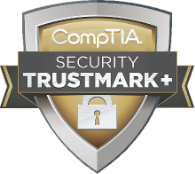Our Cybersecurity Stack includes
over 12 layers of protection
Best-of-class protection by combining a behavioral artificial intelligence-driven (AI) protection and a layered security approach.
A security platform to predict, prevent, detect, and respond to threats across your entire business.
A second source of validation to verify user identity before granting access.
24/7 event monitoring, triage, and investigation of incoming alerts, threat intelligence, and intrusion detection.
Cloud security platform that leverages DNS to provide first layer of defense against threats on the internet wherever users go.
Comprehensive protection against threat types from spam and ransomware to socially engineered threats such as spear phishing, business email compromise, and account takeover.
We alert you to compromised credentials in Dark Web markets giving you the advantage to act before cybercriminals do.
A tool that creates, remembers and fills in passwords for all your online accounts. This is crucial since 81% of breaches are caused by weak or reused passwords.
Zero trust policy-driven security to your endpoints in order to protect your business from malicious and misused software.
Comprehensive cloud-based solution that combines artificial intelligence, deep integration with Microsoft Office 365, and brand protection to guard against account takeover, cyber fraud, spear phishing, and email compromise.
Video lessons and phishing simulation campaigns to transform your employees from security risks to security assets.
A quicker, more efficient alternative to on-site SIEM; it involves deploying a hosted network monitoring system to identify any potential threats.
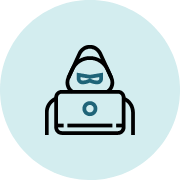
43%
of cyber attacks target small businesses.
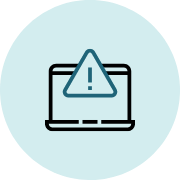
Every 11 seconds
there is one ransom attack
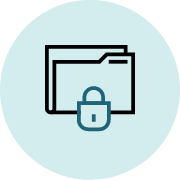
$2.98 million
is the average cost of
a data breach for
small businesses
6 Tips To Avoid Ransomware Attacks
Our cybersecurity team has created a list of security solutions you should be implementing to protect your business.
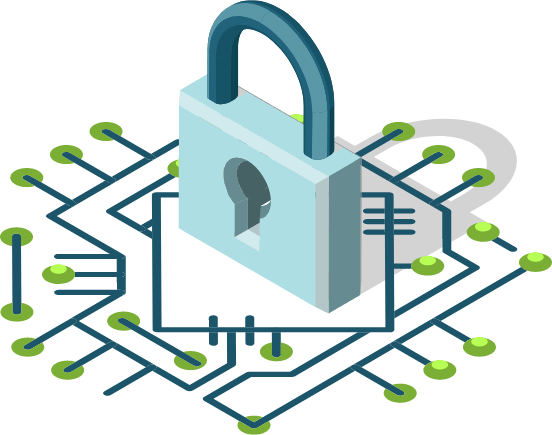
Cybersecurity Education
Humans are the weakest link in cybersecurity. Educate your users on the latest threats.
Application Whitelisting
Block access to unknown applications by default.
Ringfencing
Stop your applications from being weaponized against you.
Threat Detection
Combined with Ringfencing, use threat detection and threat hunting software.
Patch and Update
Protect against zero-day vulnerabilities by patching your software and applications.
Use Secure Passwords with 2FA Enabled
Passwords should be unique with a minimum of 12 characters.
Advantages of our Cybersecurity Services

Peace of Mind
Work with confidence knowing every aspect of your business IT is protected from cyberattacks
Increased Productivity
Your employees can focus on their jobs without having to worry about data and network security
Customer Confidence
Gain clients’ trust by ensuring their sensitive data is secure at all times
Cybersecurity controls
IT security and safety should be at the forefront of every industry sector. Cybersecurity should be a top priority for accounting and financial firms, healthcare and medical offices, law firms, manufacturing and distribution, and construction companies. You have worked very hard to build your business, so safekeeping it for continued future success is crucial. Cybersecurity controls are measures that are essential to deploy in order to counteract security risks. BCA is knowledgeable and experienced in educating our clients and implementing these controls to ensure effectiveness.
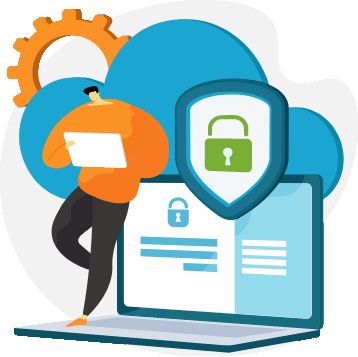
The purpose of application whitelisting is to prevent all other software applications except for those that are explicitly whitelisted from running. As such, this simple yet effective tactic makes it impossible for malware executables to run.
By creating a comprehensive inventory of information technology assets, both hardware and software applications plus their licenses, it becomes easier to assess their security and put additional measures in place. Regular inventorying of IT assets also helps combat shadow IT, the use of IT-related hardware or software without explicit approval.
This cybersecurity control provides organizations with useful information gathered from publicly available sources, mainly the internet, including the dark web. Organizations can use this information to support their strategic decision-making when determining the best way to protect themselves against cybersecurity threats.
Database encryption ensures that no malicious individuals or software can access the data stored inside. Even if the database becomes exposed in a breach, it will be of no use to the attackers because its content will appear to be completely meaningless.
This technological means can be deployed to detect early signs of potential data breaches, such as sensitive data moving during off-hours to an unknown local storage device or remote location. Suspicious data movement can then be automatically blocked until it’s investigated.
Distributed denial-of-service (DDoS) attacks, which attempt to flood the target with a large number of malicious requests, can be mitigated using a set of network management techniques and/or tools, including traffic filtering.
Domain-based Message Authentication, Reporting, and Conformance (DMARC) is a protocol used for email authentication, protecting legitimate domains from being abused for malicious purposes without authorization.
Access to malicious or inappropriate websites can be blocked using the Domain Name System, which is like the internet’s phone book, providing the information needed for a web browser to contact the server associated with a specific web address.
Everything from the presence of grammar mistakes to file attachments and links that redirect to unexpected websites can be a sign of a malicious email. Email filtering tools look for these and other signs and intelligently filter messages to keep spam at bay.
Employees face dangerous cyber threats head-on, but they can emerge victorious only when they understand what they’re up against. Employee awareness training increases their cybersecurity awareness by educating them about the threats they’re likely to encounter.
Endpoint protection software can be installed on individual computers (desktops and laptops) and mobile devices (smartphones and tablets) to protect them against malware and other threats even when located outside the firewall-protected enterprise network.
The ability to quickly and effectively respond to a security incident is guaranteed to have a hugely positive impact on its outcome, and that’s exactly what an incident response plan aims to accomplish by providing a set of instructions for employees to follow.
An intrusion detection system can detect suspicious activity on a network and issue alerts to prompt the person or team in charge of the network to investigate it further. Such systems can reveal even unknown attacks whose signatures are not yet known to traditional antimalware software.
A managed service provider (MSP) is a third-party company that remotely manages certain IT processes on behalf of its clients. MSPs make it possible for small and medium-sized organizations to cost-effectively gain access to skilled experts and state-of-the-art IT solutions.
These days, mobile devices are essential work tools, and they contain a wealth of sensitive information, from emails to documents to contacts. Mobile device encryption prevents this information from being accessible if the device becomes lost or stolen.
Compromised passwords are a leading cause of data breaches, which is why virtually all cybersecurity experts today recommend the use of multi-factor authentication. This authentication method introduces additional authentication factors, such as a PIN number or biometric information, to prevent access to sensitive resources without authorization.
By constantly monitoring all parts of the network, including routers, servers, and connected endpoint devices, network monitoring gives network administrators the information they need to accurately assess the network’s condition.
During penetration tests, cybersecurity professionals launch simulated attacks on tested organizations to evaluate the strength of their cybersecurity defenses and fix any discovered weaknesses before real attackers manage to exploit them.
A perimeter firewall creates a wall around a network, allowing only legitimate traffic to get to the other side. Most perimeter firewalls additionally provide logging and auditing capabilities, which can be useful when evaluating the cause of a security incident.
By combining SIM (security information management) and SEM (security event management) functions, SIEM aggregates security data from multiple sources to provide organizations with superior threat detection, analytics, and response capabilities.
Using automated testing tools, networks and individual endpoints can be scanned for known vulnerabilities that would make it possible for attackers to gain access to them without authorization if exploited.
A web application firewall (WAF) is a special-purpose firewall that’s designed to monitor and block HTTP/S traffic to and from web applications. By adhering to a set of policies, can protect against a number of different attacks, including SQL injection, cross-site scripting (XSS), and cookie poisoning.
Relying on a variety of different techniques, including DNS filtering, web content filtering blocks access to websites that are deemed to be inappropriate or unsafe. Examples of commonly blocked websites include file-sharing portals, adult sites, and social media.

